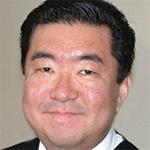Image
 People are outliving their skin. Dr. Seungkwon Lee is pioneering the future of its care.
People are outliving their skin. Dr. Seungkwon Lee is pioneering the future of its care.

Few people think much about their skin. The average adult carries about eight pounds and 22 square feet of skin1. And surprisingly, that skin often has to stay healthy for nearly a century.
Dr. Lee says, “15 or 20 years ago, people hospitalized by a stroke or heart attack rarely survived.” Thanks to advances in care, patients now survive that catastrophic event and can return home even at 90 or 100 years of age. But they leave the hospital with skin failure – pressure ulcers, wounds that won’t heal, and worse. Simply stated, we’re starting to outlive our skin.”
Dr. Lee was born in Seoul, South Korea, and moved to the U.S. in 1964 when he was four. He began his career attending Johns Hopkins University for undergraduate studies in chemistry before going to the University of Pittsburgh School Of Medicine in 1982. He completed general surgery training in Cleveland at St. Luke’s Medical Center before becoming one of the founding members of Northeast Surgical Associates of Ohio. “My mother,” Dr. Lee says, “was very proud. She wanted me to be a doctor before I was even born.”
He became a wound care specialist after finishing his general surgery training. Even today, wound care is rarely taught as a specialty. “It’s still a case of ‘see one, do one, teach one’ and that’s how it was with me. But I immediately wanted to learn more.“
What attracted Dr. Lee to the Cooperative of American Physicians was the chance to learn from colleagues. “CAP is so much more than just a resource for malpractice coverage. There is so much interaction and involvement -- things I’ve never seen anywhere else. It’s remarkable.”
That passion for learning took him to England in 1993 for the famous Oxford Summer School seminar to see advanced techniques in wound dressing. “Clinical scientists showed that traditional “wet-to-dry gauze” was pretty much the worst thing to promote healing. You’re leaving cotton fibers in the wound, causing chronic inflammation. And, cotton is a wonderful way to grow infection.“
He came home and spent two decades pioneering wound management at Northeast Surgical Associates. Today, the Ohio-based group delivers state-of-the-art wound management services to more than 350 nursing homes and numerous home care agencies. The team he founded has managed over a quarter million wounds with 90 percent positive outcomes.
Dr. Lee relocated to Northern California and became Medical Director for Wound Care for SI skilled nursing facilities. He works with home health agencies and is chief of the medical staff at Vibra Health LTAC Hospital.
“The old wives tale that you should let a wound ‘breathe’ is wrong. If a wound dries out, you destroy all the healthy tissue,” he explains. “You need to maintain a certain level of moisture. If the wound is dry, you can use advanced hydrogels to provide moisture, and if there is too much drainage, you need to absorb and balance that out.”
What attracted Dr. Lee to the Cooperative of American Physicians was the chance to learn from colleagues. “CAP is so much more than just a resource for malpractice coverage. There is so much interaction and involvement -- things I’ve never seen anywhere else. It’s remarkable.”
Dr. Lee is an international speaker on wound care and has made over 1,000 presentations on the subject. He works with wound care product companies on educational programs, clinical trials, and research. In addition, Dr. Lee has served as part of the corporate advisory council to the National Pressure Ulcer Advisory Panel. He is also a board member of the Association for the Advancement of Wound Care.
This does not leave much time for his golf game, where he is pushing to get back to his 12 handicap. But as busy as Dr. Lee is, he is even more excited. “This field is growing every day. We can help more patients facing chronic, complex wounds. There are advanced technologies like amniotic membrane technology and placental tissue as skin substitutes for chronic non-healing wounds. We’re driving better outcomes and getting more cost-effective at the same time.“
It is good to know that somebody is out there saving our skin. And even better to know that it is someone as dedicated as Dr. Lee.
1Source: http://science.nationalgeographic.com/science/health-and-human-body/human-body/skin-article/